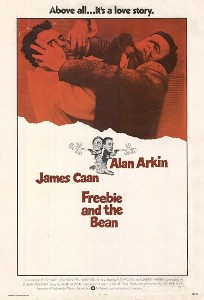
James Edmund Caan was an American actor. He came to prominence playing Sonny Corleone in The Godfather (1972) – a performance that earned him Academy Award and Golden Globe nominations for Best Supporting Actor. He reprised his role in The Godfather Part II (1974). He received a motion-picture star on the Hollywood Walk of Fame in 1978.

Rush Hour is a 1998 American buddy action comedy film directed by Brett Ratner and written by Jim Kouf and Ross LaManna from a story by LaManna. It stars Jackie Chan and Chris Tucker as mismatched police officers who are assigned to rescue a Chinese diplomat's abducted daughter. Tzi Ma, Tom Wilkinson, Ken Leung, Mark Rolston, Elizabeth Peña, and Rex Linn play supporting roles. Released on September 18, 1998, the film grossed over $244 million worldwide. Its box office commercial success led to two sequels: Rush Hour 2 (2001) and Rush Hour 3 (2007).

Beverly Hills Cop is a 1984 American buddy cop action comedy film directed by Martin Brest, with a screenplay by Daniel Petrie Jr., and story by Danilo Bach and Daniel Petrie Jr. It stars Eddie Murphy as Axel Foley, a street-smart Detroit detective who visits Beverly Hills, California, to solve the murder of his best friend. Judge Reinhold, John Ashton, Ronny Cox, Lisa Eilbacher, Steven Berkoff, Paul Reiser, and Jonathan Banks appear in supporting roles.

Blue Streak is a 1999 American buddy cop action comedy film directed by Les Mayfield. Inspired by the 1965 film The Big Job, the film stars Martin Lawrence, Luke Wilson, Dave Chappelle, Peter Greene, Nicole Ari Parker and William Forsythe. Lawrence plays Miles, a jewel thief who tries to retrieve a diamond he left at a police station, whereupon he disguises himself as a detective and gets paired with a real policeman to investigate burglaries. The film was shot on location in California. The prime shooting spot was Sony Pictures Studios, which is located in Culver City, California.
Buddy cop is a film and television genre with plots involving two people of very different and conflicting personalities who are forced to work together to solve a crime and/or defeat criminals, sometimes learning from each other in the process. The two are normally either police officers (cops) or secret agents, but some films or TV series that are not about two officers may still be referred to as buddy cop films/TV series. It is a subgenre of buddy films. They can be either comedies or action-thrillers.
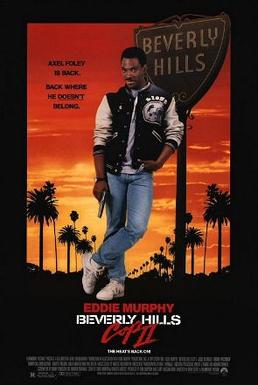
Beverly Hills Cop II is a 1987 American buddy cop action comedy film directed by Tony Scott, written by Larry Ferguson and Warren Skaaren, and starring Eddie Murphy. It is the sequel to the 1984 film Beverly Hills Cop and the second installment in the Beverly Hills Cop film series. Murphy returns as Detroit police detective Axel Foley, who reunites with Beverly Hills detectives Billy Rosewood and John Taggart to stop a criminal organization after Captain Andrew Bogomil is shot and seriously wounded.

Bulletproof is a 1996 American buddy cop action comedy film directed by Ernest Dickerson and starring Damon Wayans and Adam Sandler.
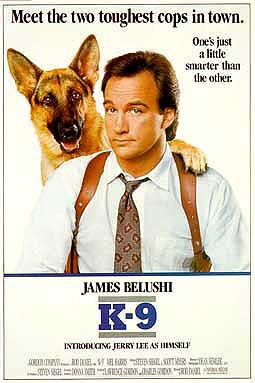
K-9 is a 1989 American buddy cop action comedy film starring Jim Belushi and Mel Harris. It was directed by Rod Daniel, written by Steven Siegel and Scott Myers, produced by Lawrence Gordon and Charles Gordon, and released by Universal Pictures.
Andrew Bergman is an American screenwriter, film director, and novelist. His best-known films include Blazing Saddles, The In-Laws, The Freshman and Striptease.

The buddy film is a subgenre of romantic comedy, a combination of the romance, adventure and comedy film in which two people, bonded through some kind of affection or love for each other, go on an adventure, mission, or road trip. The two typically are males with contrasting personalities. The contrast is sometimes accentuated by an ethnic difference between the two. The buddy film is commonplace in Western cinema; unlike some other film genres, it endured through the 20th century with different pairings and different themes.
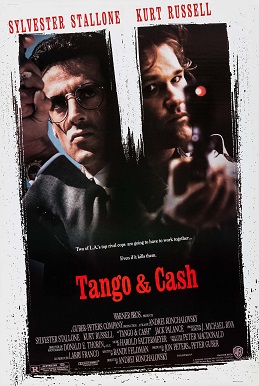
Tango & Cash is a 1989 American buddy cop action comedy film starring Sylvester Stallone, Kurt Russell, Jack Palance, and Teri Hatcher. The film follows the titular pair of rival police detectives who are forced to work together after a criminal mastermind frames them for murder.

48 Hrs. is a 1982 American buddy cop action comedy film directed and co-written by Walter Hill, co-written by Larry Gross, Steven E. de Souza and Roger Spottiswoode, and starring Nick Nolte and Eddie Murphy as a cop and a convict, respectively, who team up to catch two hardened criminals. The title refers to the amount of time they have to solve the crime.

Richard Rush was an American film director, scriptwriter, and producer. He is known for directing The Stunt Man, for which he received a nomination for the Academy Award for Best Director. His film Color of Night won a Golden Raspberry Award as the worst film of 1994, but Maxim magazine also singled the film out as having the best sex scene in film history. Rush, whose directing career began in 1960, also directed Freebie and the Bean, a police buddy comedy/drama starring Alan Arkin and James Caan. He co-wrote the screenplay for the 1990 film Air America.

Partners is a 1982 American gay-themed buddy comedy film directed by James Burrows and starring Ryan O'Neal and John Hurt as a mismatched pair of cops.
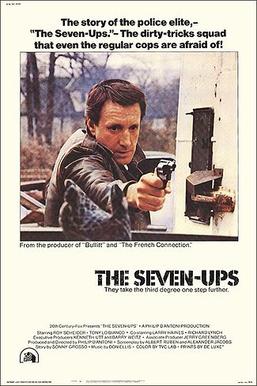
The Seven-Ups is a 1973 American neo-noir mystery action thriller film produced and directed by Philip D'Antoni. It stars Roy Scheider as a crusading policeman who is the leader of the Seven-Ups, a squad of plainclothes officers who use dirty, unorthodox tactics to snare their quarry on charges leading to prison sentences of seven years or more upon prosecution, hence the name of the team.

Get Smart is a 2008 American spy action comedy film directed by Peter Segal, written by Tom J. Astle and Matt Ember and produced by Leonard B. Stern, who is also the producer of the original series. The film is based on Mel Brooks and Buck Henry's television series of the same name.
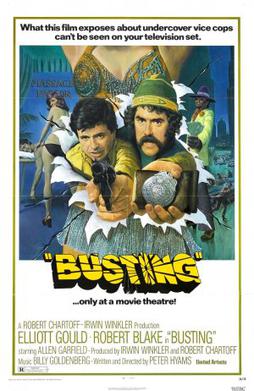
Busting is a 1974 American buddy cop film, directed by Peter Hyams in his theatrical directorial debut, starring Elliott Gould and Robert Blake as police detectives of the Los Angeles Police Department (LAPD). The film was the main inspiration for the cop series Starsky & Hutch, which premiered in 1975 and, like this film, also featured Antonio Fargas.

Fuzz is a 1972 American action comedy film directed by Richard A. Colla and starring Burt Reynolds, Yul Brynner, Raquel Welch, Tom Skerritt and Jack Weston.

Harry and Walter Go to New York is a 1976 American period comedy film written by John Byrum and Robert Kaufman, directed by Mark Rydell, and starring James Caan, Elliott Gould, Michael Caine, Diane Keaton, Charles Durning and Lesley Ann Warren. In the film, two dimwitted con-men try to pull off the biggest heist ever seen in late nineteenth-century New York City. They are opposed by the greatest bank robber of the day, and aided by a crusading newspaper editor.
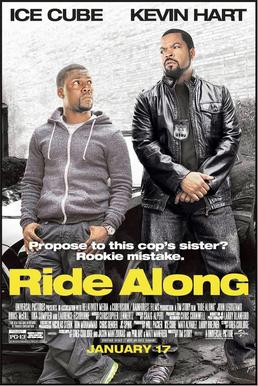
Ride Along is a 2014 American buddy cop action comedy film directed by Tim Story and starring Ice Cube and Kevin Hart.
